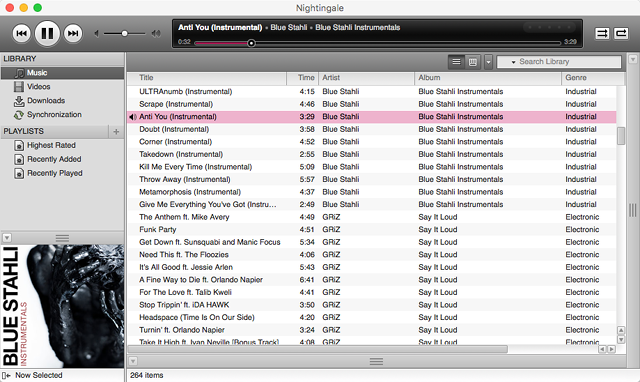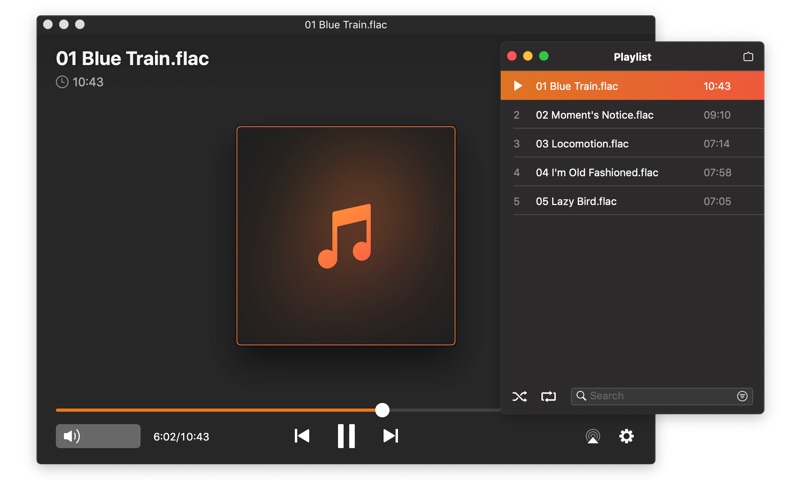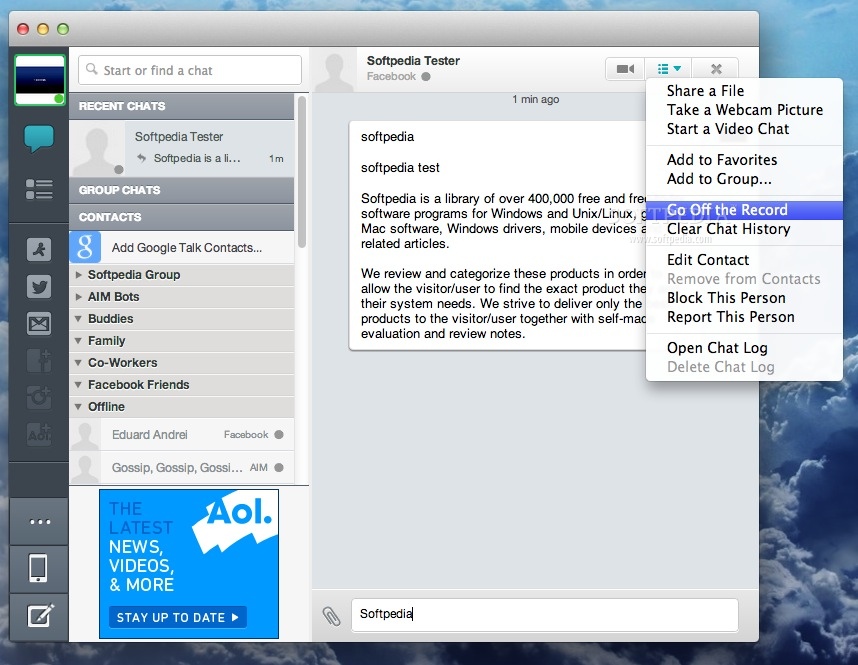


That is, it does not terminate its children on my system, but I've long forgotten if that was something I configured myself, or the default behavior. However, the bottom line is that you can control whether a shell's subprocesses (bash = your shell) are terminated, when the shell is terminated.īy default, I don't think bash itself terminates its backgrounded children, when you exit bash (by typing control-D or exit).
#Flac player os x 10.5 full
This is a little complicated - the full details are far too involved to go into right here. It'll take a little bit of learning to get used to it (the man page is VERY big), but I absolutely swear by screen. The only thing screen doesn't do is survive a reboot (go figure). It's all still there to reconnect to when you re-open Terminal and reconnect to it. If you're running screen, and terminal crashes, nothing happens to screen. Be forewarned this is a VERY extreme example. It serves an excellent second purpose that if you're doing something (say, ssh'ed into a remote server) and your connection goes away, everything you were doing inside screen continues to run, or everything you have done remains there in context until you reconnect to the server and resume screen. Screen is a "terminal multiplexer", it allows you to turn one terminal into many all self contained. Nohup will continue command execution until completion (or failure, either way a program exit), and then it'll go away.
#Flac player os x 10.5 how to
Or you can learn how to use the 'screen' command. One is that you can use the 'nohup' command to continue command execution even if the shell goes away. You have two options, and both may be a bit more involved than you want to be. (Applications don't run without a controller of some manner.) Using & puts it in the background of the shell, but if you kill the shell, you kill that application as well. You can quickly play an audio file, by selecting Cog from “Open With” option in the right-click context menu.Don't worry that you're doing something wrong. It pops out at the bottom of the main interface, as shown in the screenshot below.įile drawer feature helps you in selecting new files by simply dragging them into player’s main interface as shown below. Info drawer is a feature which shows the song details which is currently being played. You can select one file or multiple files which you want to be played. It has all the features which a basic audio player holds.
#Flac player os x 10.5 mac os x
It supports, Ogg Vorbis, FLAC, AAC, MP3, WAV, AIFF, Musepack, Monkey’s Audio, Shorten, WavPack, Apple Lossless, and all codecs which are supported by Mac OS X 10.4’s Core Audio API. It is a freeware open source audio player for your OS X.

Cog is one of the best options to play your multiple audio file formats – simply and elegantly. As you might be familiar that iTunes is a very heavy application which consumes a big part of your memory resources, this article will also guide you to find an alternative option which is lightweight, small and can play your audio files only. You must have enjoyed the powerful iTunes for playing music on your Mac, but as it is human nature sometimes one gets bored of the same iTunes interface and wants some change, or an alternative player.


 0 kommentar(er)
0 kommentar(er)
